Parts, Assets, Materials and Services Catalogs
The Catalog module is where you manage (add and edit) your catalog of Parts, Assets, Materials, and Services. A record must be added here before the item can be added as inventory at a Stock Location or as an Asset at a Customer Site. These records contain information about the item's cost, manufacturer, stock unit type, etc.
Adding Parts and Assets to the Catalog
Parts and Assets are used in several different modules across the product.

To add a new Part or Asset to the Catalog, go to the Catalog > Parts and Assets module, click the “Add New” button in the top right of the data grid, and fill in the side panel fields as described below.
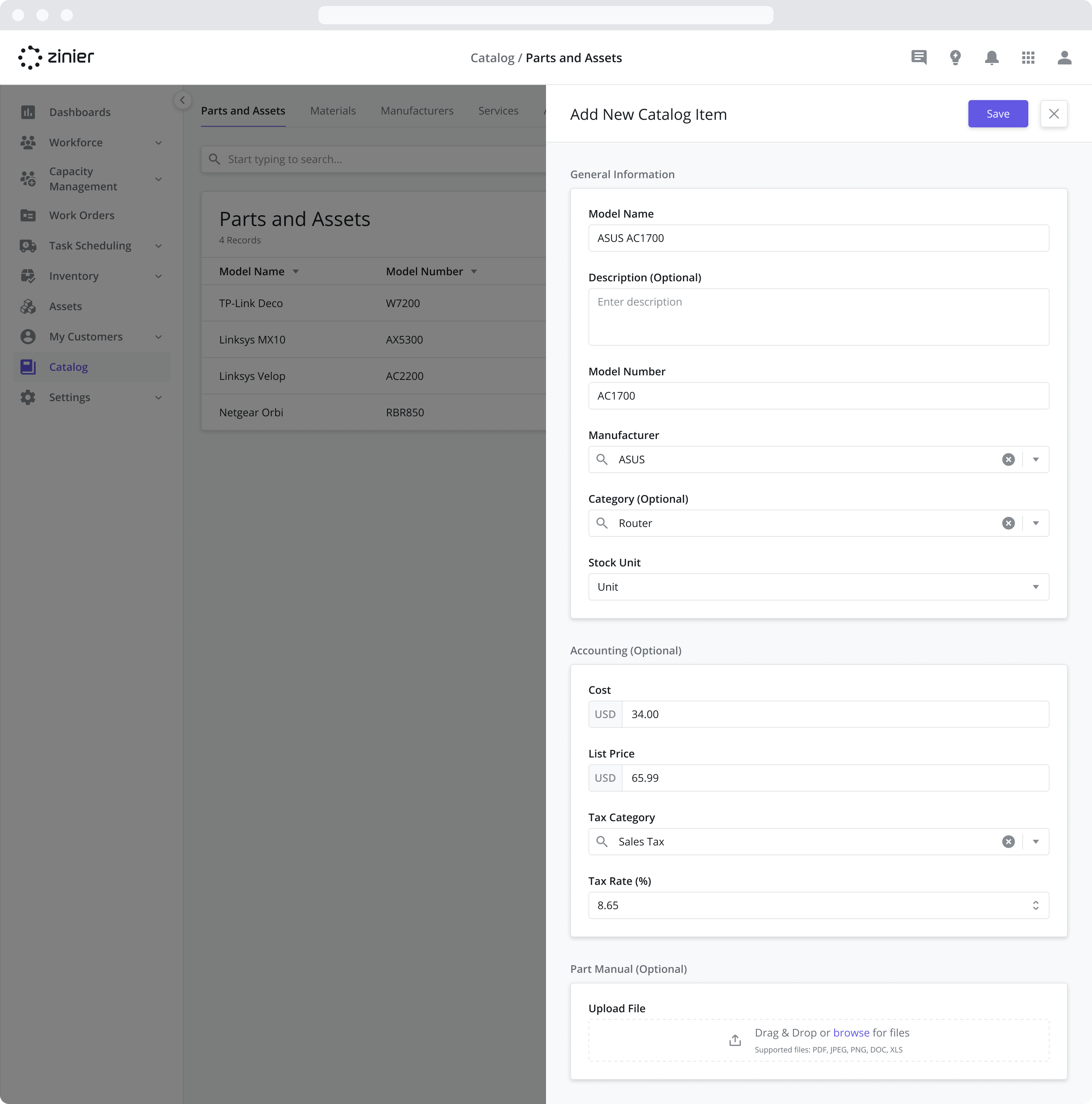
Model Name and Description (Optional)
The model name will be used to identify it across the other modules in the product.
Model Number
This field is typically used by inventory managers to further identify the Part or Asset.
Manufacturer
This field is typically used by inventory managers to further identify the Part or Asset.
To assign a Manufacturer, it must first be created from the Catalog > Manufacturers module. For more information, see the Manufacturers section.
Category (Optional)
This field is used to organize items into categories for organizational purposes and can be leveraged in mobile workflows as required. For example, if a technician is installing a router at a customer site and has several different routers in his or her stock inventory, it could be useful to create a “Router” category. As part of the mobile workflow, I would then be able to leverage the Category field as a filter so that the desired router can be more easily found and selected.
To assign a Category, it must first be created from the Catalog > Asset Categories module. For more information, see the Asset Categories section.
Stock Unit
Stock Units define the unit of measurement used for the item (i.e. a Box, Case, or Pallet).
To assign a Stock Unit, it must first be created from the Settings > Business Settings > Stock Units module. For more information, see the Stock Units section.
Default Cost, List Price, and Tax Rate (%)
These fields are not currently used by other modules directly but can be leveraged within an implementation to assist when billing and invoicing customers or connecting to external ERP systems. These fields are displayed when adding a Part to a Task during Work Order creation but can be overridden at that time.
Tax Category
The Tax Category is used to auto-populate the Tax Rate (%).
To assign a Tax Category, it must first be created from the Catalog > Tax Categories module. For more information, see the Tax Categories section.
Upload a Part Manual (Optional)
Part Manuals can be referenced by technicians in the field if made available within a mobile workflow / Task.
Adding Materials to the Catalog
Materials are similar to Parts and Assets and are used in several different modules across the product. Materials records differ from Parts and Assets in that the Model Number and Manufacturer are often not used and are thus optional fields. Additionally, Materials records do not contain a serial number when added as Inventory.
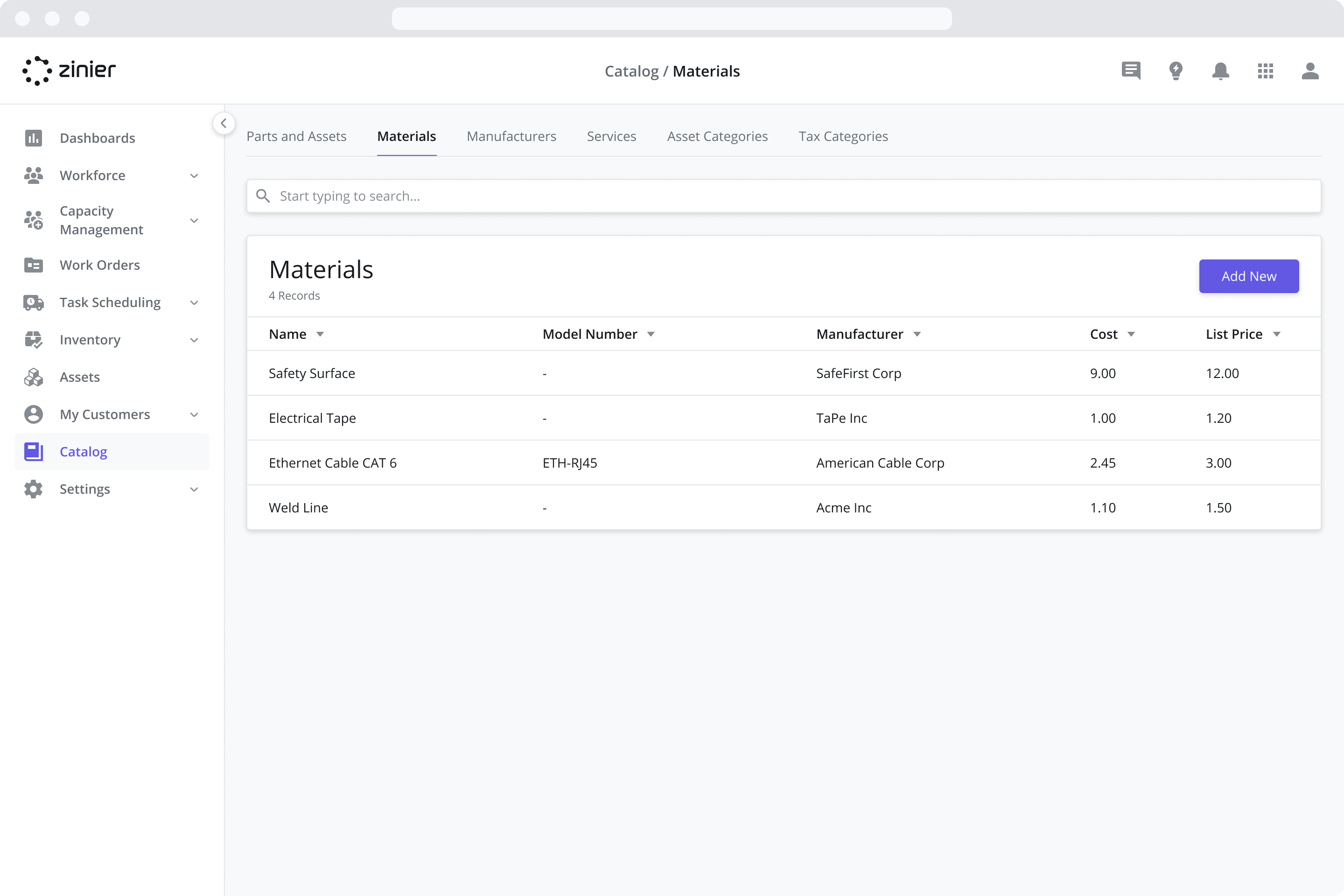
To add a new Material to the Catalog, go to the Catalog > Materials module, click the “Add New” button in the top right of the data grid, and fill in the side panel fields as described below.
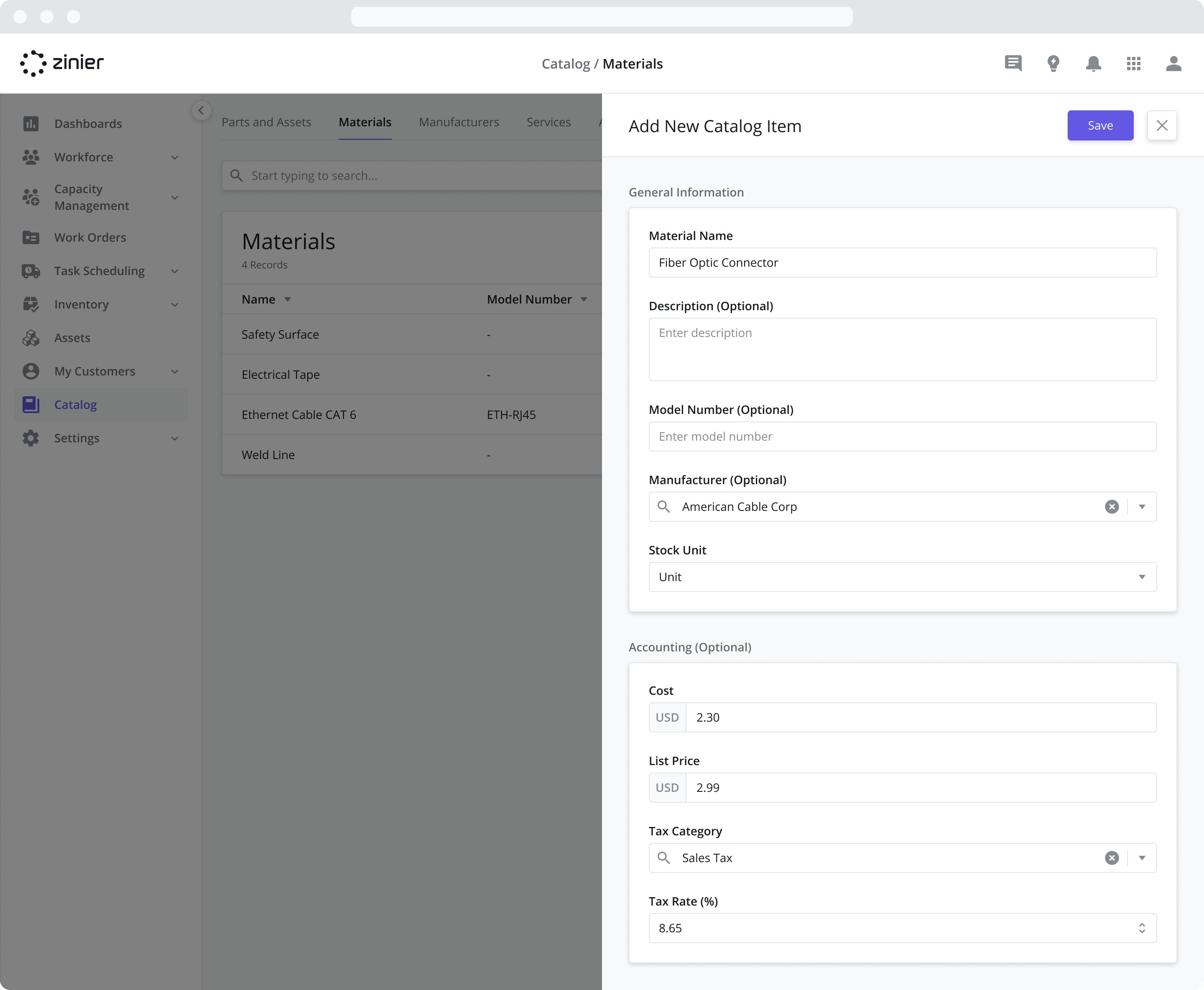
Material Name and Description (Optional)
The material name will be used to identify it across the other modules in the product.
Model Number (Optional)
This field is typically used by inventory managers to further identify it but may not be required when tracking materials.
Manufacturer
This field is typically used by inventory managers to further identify the Part or Asset.
To assign a Manufacturer, it must first be created from the Catalog > Manufacturers module. For more information, see the Manufacturers section.
Stock Unit
Stock Units define the unit of measurement used for the item (i.e. a Box, Case, or Pallet).
To assign a Stock Unit, it must first be created from the Settings > Business Settings > Stock Units module. For more information, see the Stock Units section.
Default Cost, List Price, and Tax Rate (%)
These fields are not currently used by other modules directly but can be leveraged within an implementation to assist when billing and invoicing customers or connecting to external ERP systems. These fields are displayed when adding Materials during Work Order creation but can be overridden at that time.
Tax Category
The Tax Category is used to auto-populate the Tax Rate (%).
To assign a Tax Category, it must first be created from the Catalog > Tax Categories module. For more information, see the Tax Categories section.
Adding Manufacturers to the Catalog
The Manufactures field is typically used by inventory managers to further identify a Part or Asset. As described above, it must first be added here before it can be added to a new Catalog item.
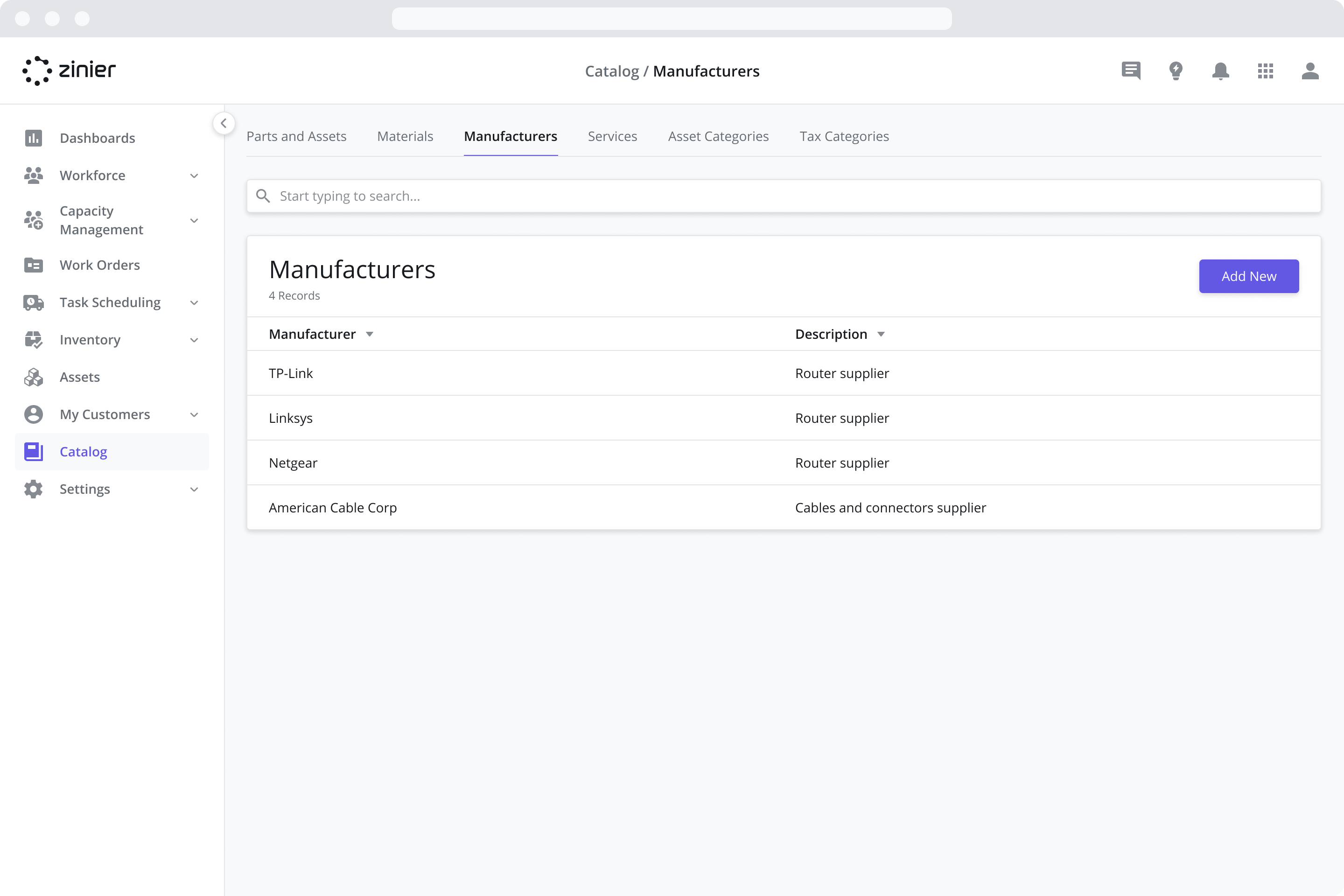
To add a new Manufacture, go to the Catalog > Manufacturers module and click the “Add New” button in the top right of the data grid. Next, give the Manufacture a Name and Description (Optional) and then click Save. Once the record is created, it will become visible in the “Manufactures” dropdown menu when adding a new Catalog item.
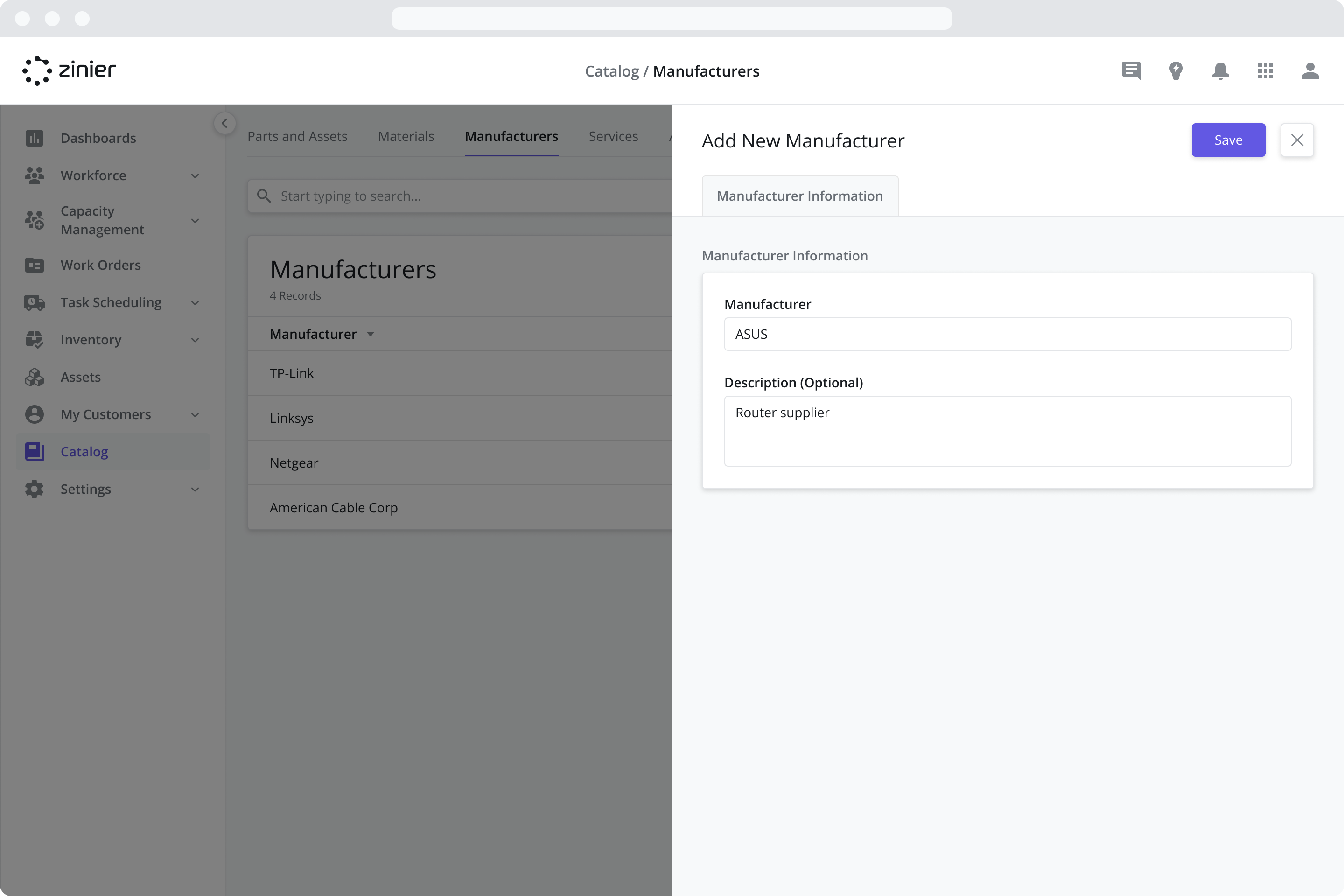
View a List of the Parts and Assets from this Manufacturer
Any catalog items (Parts, Assets, Materials) that have been tagged to the Manufacturer will be visible from the “Catalog Items” tab.
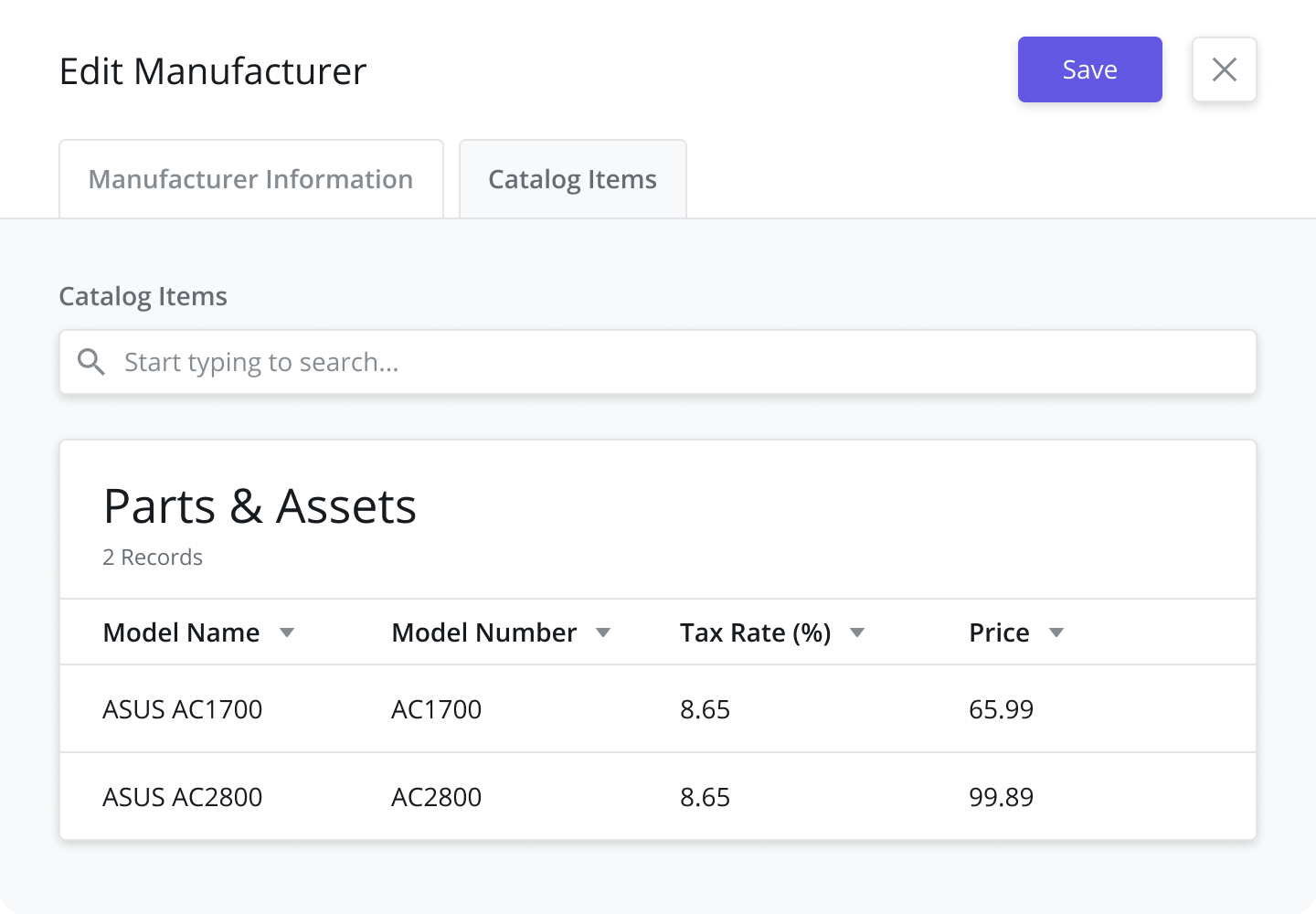
Adding Services to the Catalog
Services represent are a set of smaller steps for the Technician to follow when performing a task and can be given a monetary value for accounting purposes. Adding the record here allows you to tie a dollar value and tax rate to the Service. Once added, the Service can then be added to a Task Type for use in Work Orders.
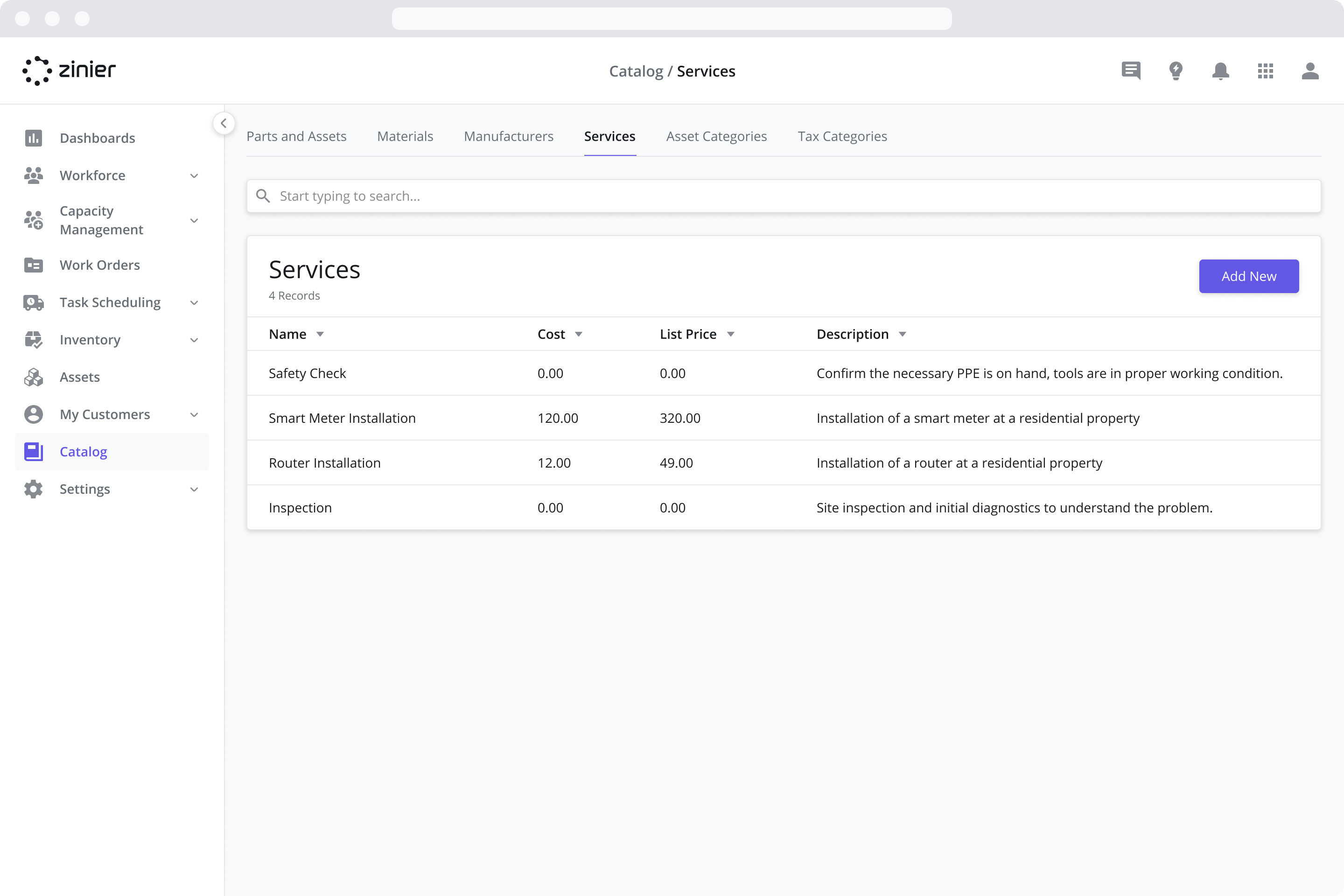
To add a new Service, go to the Catalog > Services module and click the “Add New” button in the top right of the data grid. Next, fill in the side panel fields as described below.
Name and Description (Optional)
The name will be used to identify it across the other modules in the product.
Default Price (Optional) and Tax Rate (%)
The Price typically represents the hourly cost associated with the Service (Cost / per hour) although it can also be used as a fixed cost for the service to be completed. Both the Price and Tax Rate fields are not currently used by other modules directly but can be leveraged within an implementation to assist when billing and invoicing customers or connecting to external ERP systems. These fields are displayed when adding a Service to a Task during Work Order creation but can be overridden at that time.
Tax Category (Optional)
The Tax Category is used to auto-populate the Tax Rate (%).
To assign a Tax Category, it must first be created from the Catalog > Tax Categories module. For more information, see the Tax Categories section.
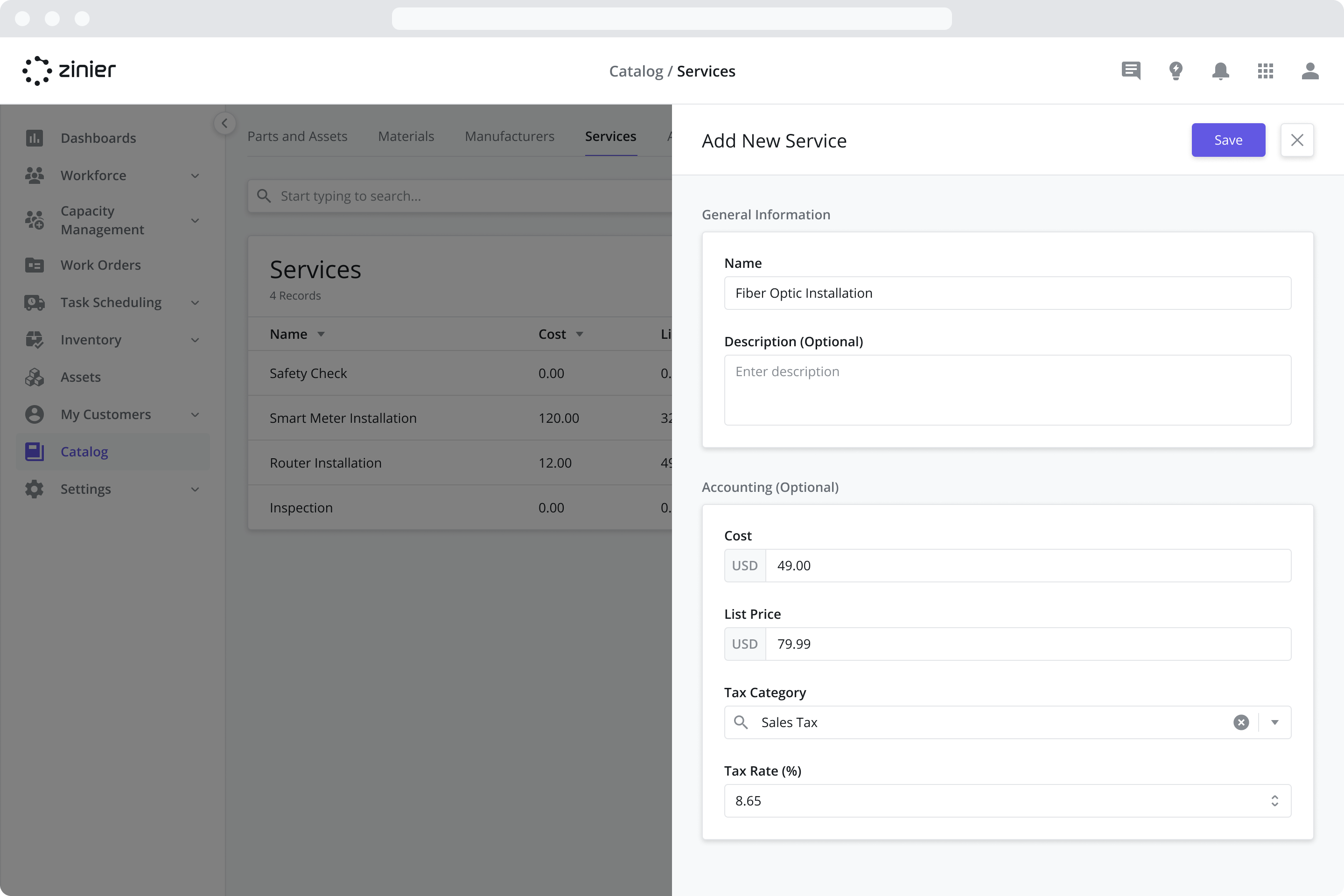
Adding Asset Categories to the Catalog
Asset Categories allow you to organize Parts and Assets items into categories for organizational purposes and can be leveraged in mobile workflows as required. For example, if a technician is installing a router at a customer site and has several different routers in his or her stock inventory, it could be useful to create a “Router” category. As part of the mobile workflow, I would then be able to leverage the Category field as a filter so that the desired router can be more easily found and selected. A record must be added here before the item can be assigned to a Part / Asset.
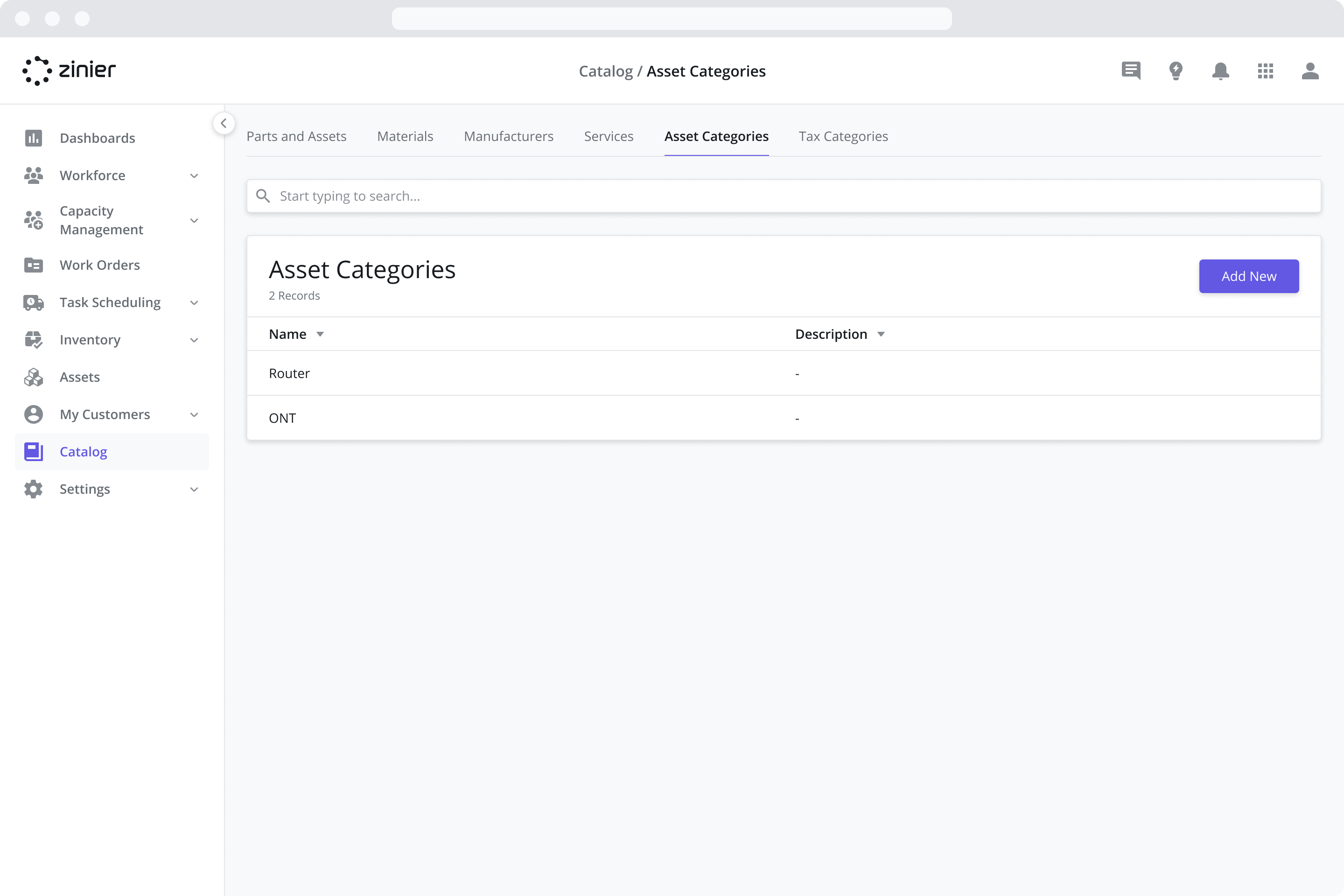
To add a new Asset Category, go to the Catalog > Asset Categories module and click the “Add New” button in the top right of the data grid. Next, give the Manufacture a Name and Description (Optional) and then click Save. Once the record is created, it will become visible in the “Categories” dropdown menu when adding a new Part / Asset.
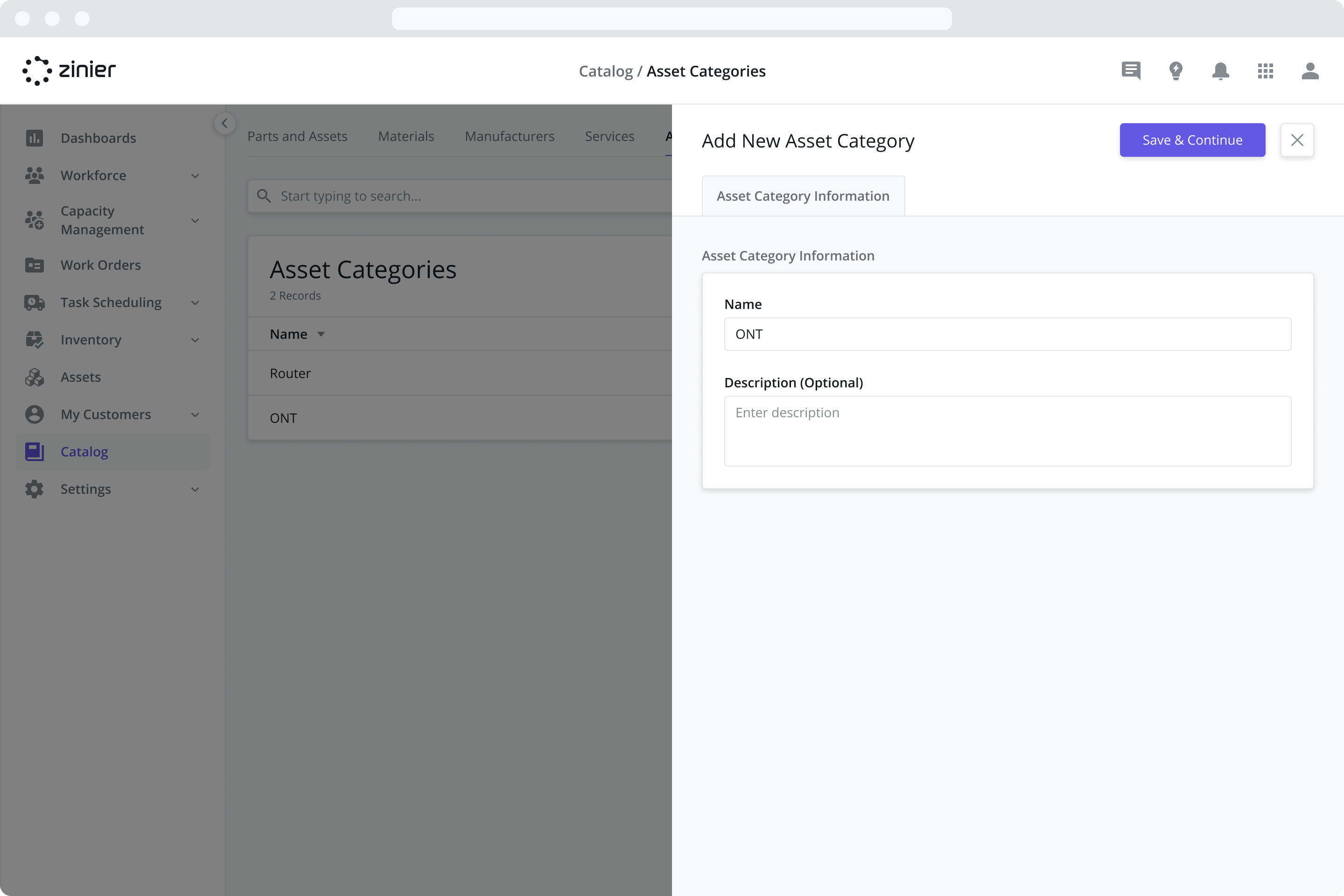
View a List of the Parts and Assets within this Asset Category
Parts and Assets that have been tagged to the Asset Category will be visible from the “Catalog Items” tab.
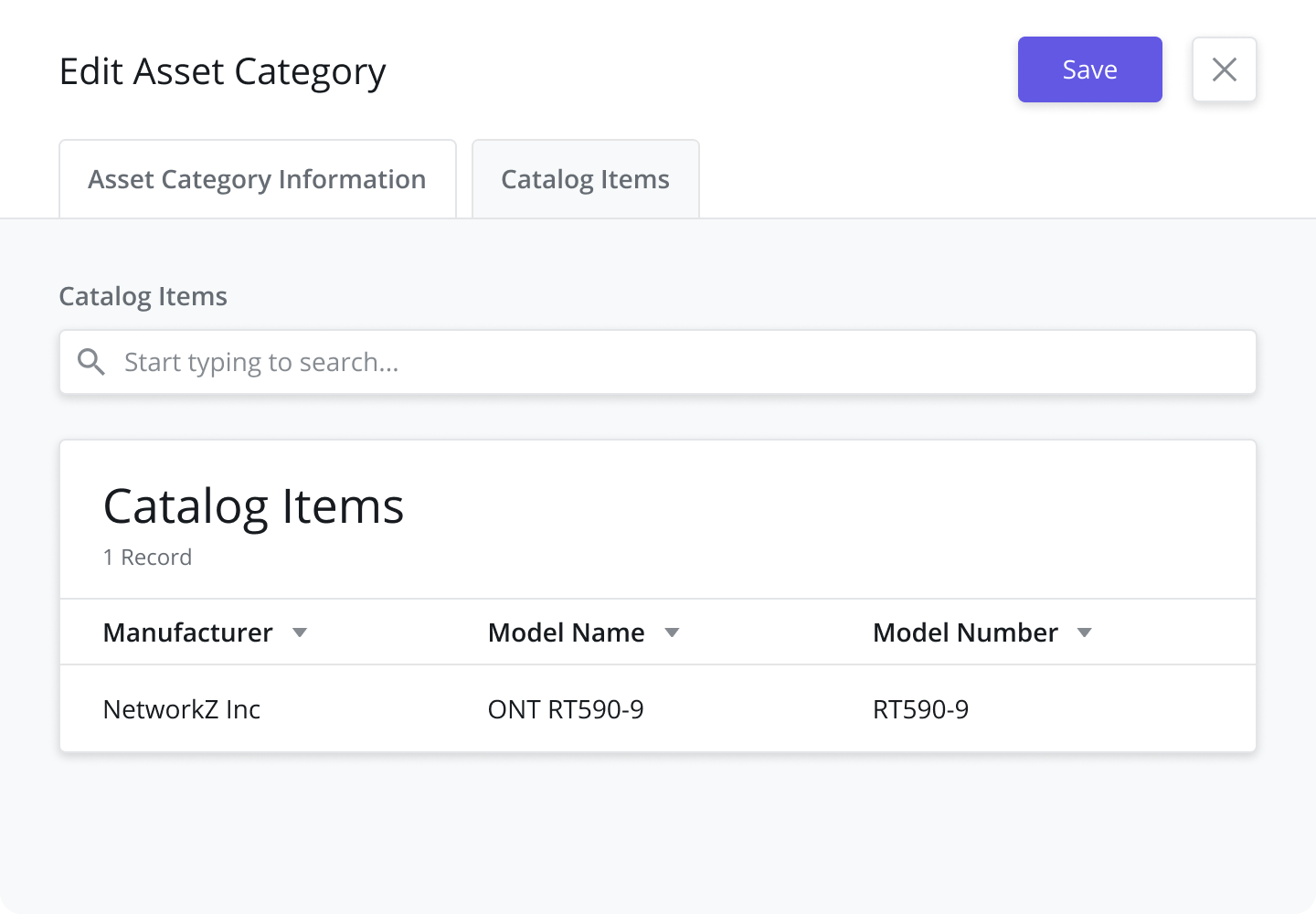
Adding Tax Categories to the Catalog
Tax Categories allow you to define specific Tax Rates for items in your catalog to assist when billing and invoicing customers or connecting to external ERP systems. A record must be added here before the item can be assigned to a Part, Asset, Material, or Service.

To add a new Tax Category, go to the Catalog > Tax Category module and click the “Add New” button in the top right of the data grid. Next, fill in the side panel fields as described below.
Name and Description (Optional)
The name will be used to identify it across the other modules in the product.
Tax Rate (%)
The Tax Rate is used to by the Tax Category associated with a catalog item to assist when billing and invoicing customers or connecting to external ERP systems. The Tax Rate fields are not currently used by other modules directly but can be leveraged within an implementation to assist when billing and invoicing customers or connecting to external ERP systems.
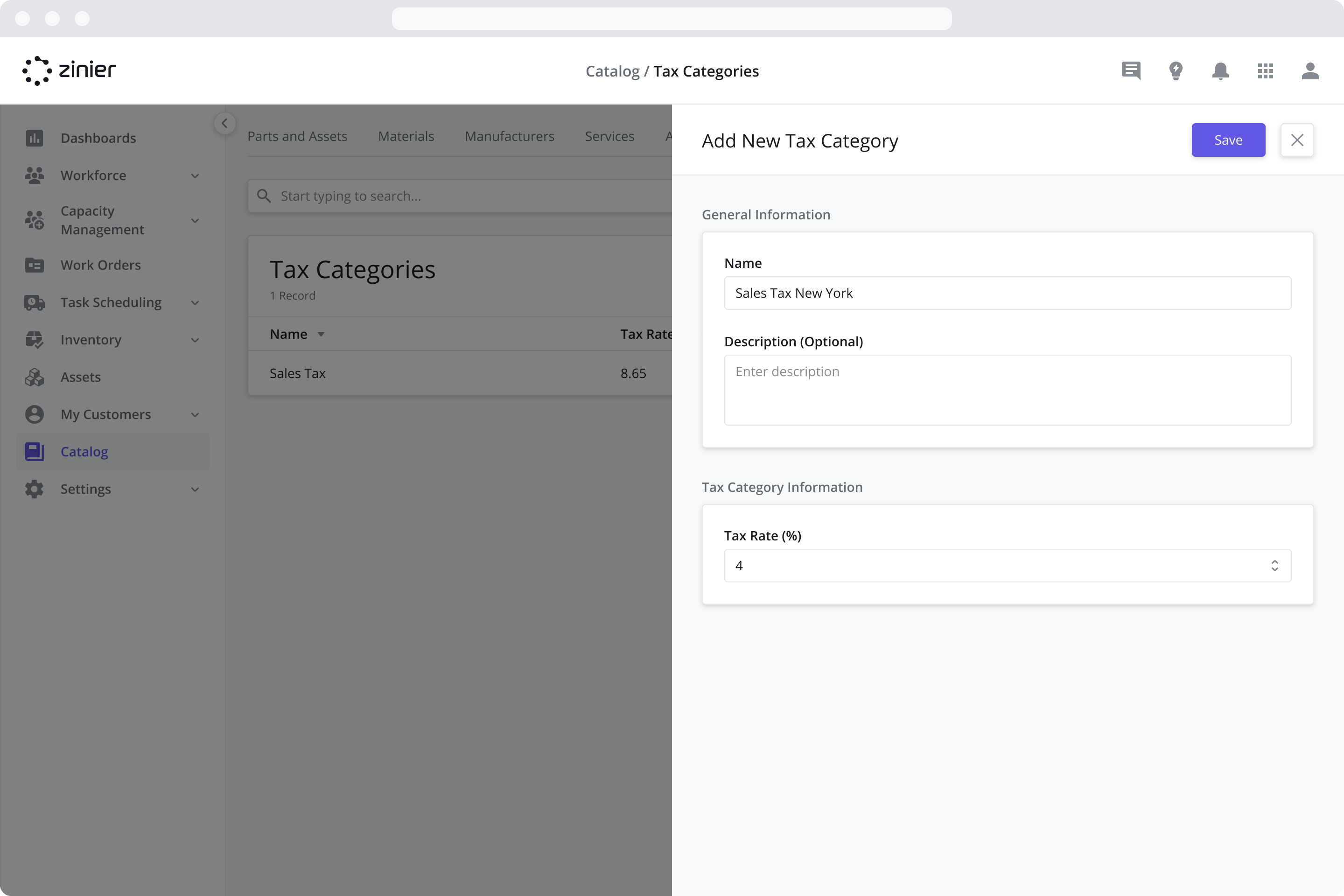
Adding Stock Units to the Catalog
Stock Units define the unit of measurement used for Part Asset or Material (i.e. a Box, Case, or Pallet). A record must be added here before the item can be assigned to a Part, Asset, or Material.
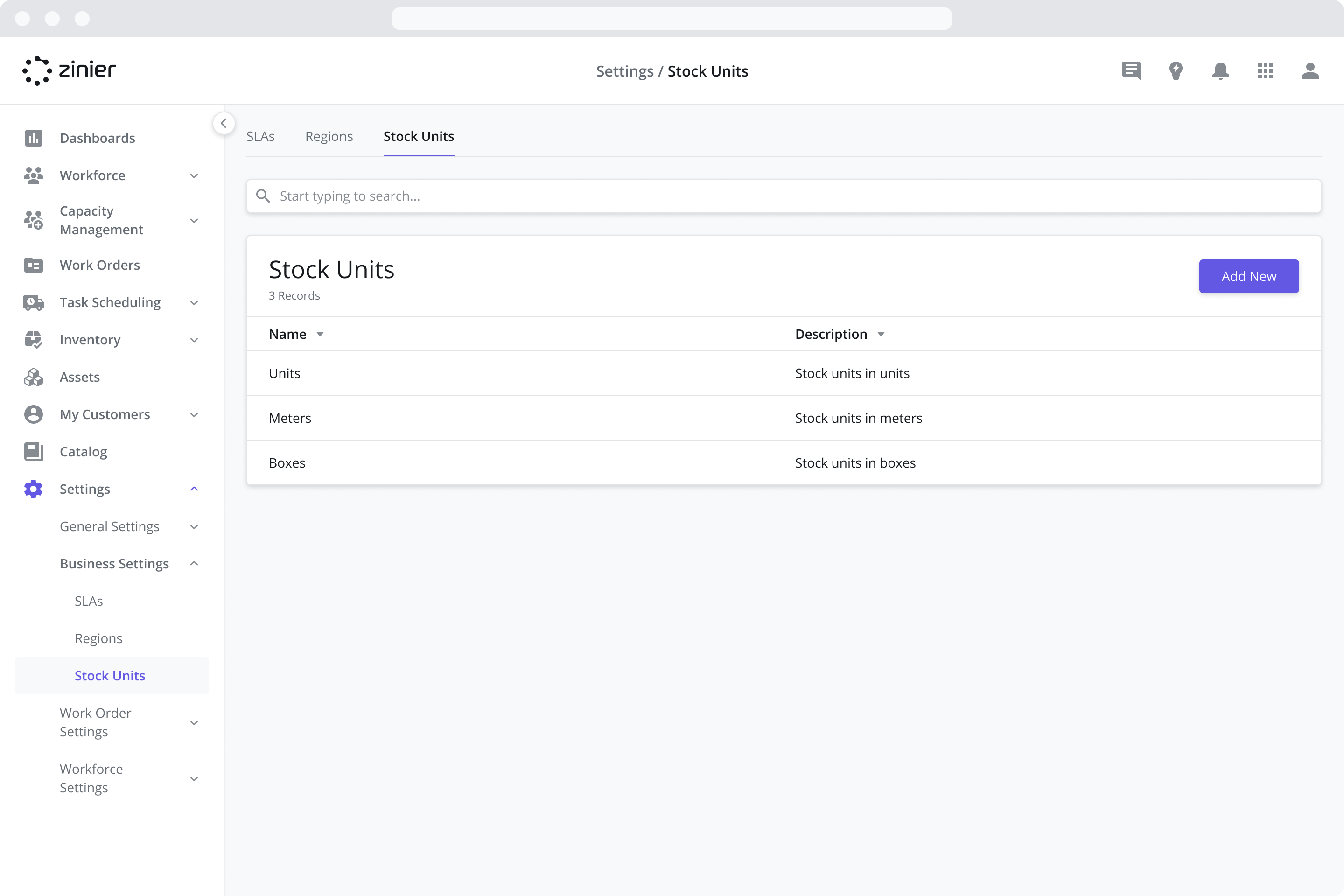
To add a new Stock Unit, go to the Catalog > Stock units module and click the “Add New” button in the top right of the data grid. Next, give the Stock Unit a Name and Description (Optional), and then click Save. Once the record is created, it will become visible in the “Stock Units” dropdown menu when adding a new Part / Asset or Material.

